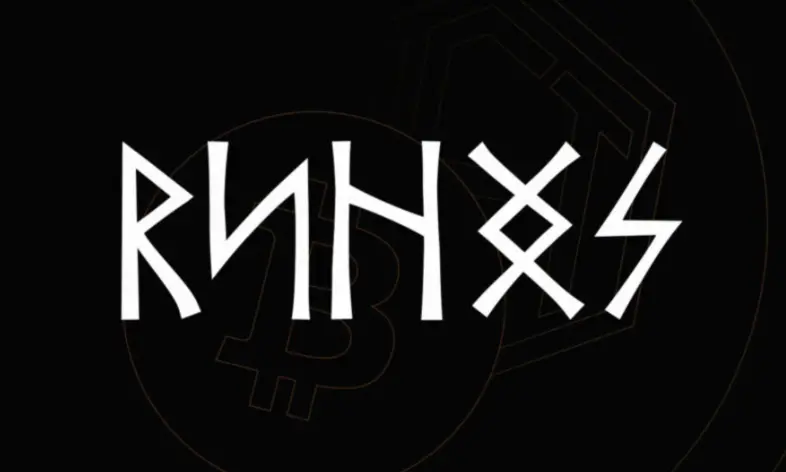The popularity of Runes is a setback in the development of cryptographic technology, but it is also the best embodiment of the core values of Web3
Author: @Web3Mario
Introduction: Yesterday, I learned from a friend that he had made a significant investment return in the BTC inscription field, which deeply stirred my feelings of missing out. I felt anxious for two consecutive days, which was quite embarrassing. I recalled that after the release of the Ordinals technical architecture some time ago, I studied the relevant documents, but as a developer, I was quite skeptical about this technical path. At that time, I judged that it was a regression in cryptographic technology because its design concept seemed similar to a distant altcoin project called Color Coin, which was about how to issue independent tokens using BTC's technical architecture. However, unlike Color Coin, Ordinals did not redevelop a new chain but chose to reuse the currently widely recognized BTC network. Compared to the proposal of on-chain virtual machines (such as EVM or other WASM), this architecture has been proven by the market to be somewhat rudimentary and not scalable, constrained by the fact that BTC does not have a Turing-complete execution environment, making the development of related application layers relatively difficult and also very expensive! Even after the so-called orthodox Runes technology was released, I was still quite skeptical after reading the relevant documents, only confirming some standards that made the so-called BRC-20 look less rudimentary. These standards are hardly worth mentioning in the context of on-chain virtual machine solutions, as designing an ERC-20 is something a novice Web3 developer can accomplish… However, these judgments seem pale and laughable in the face of tangible wealth effects. After calming down, I have some related thoughts to share with you, exploring what the core value of Web3 truly is.
The tangible fact at the root of all our thought-distinctions, however subtle, is that there is no one of them so fine as to consist in anything but a possible difference of practice. To attain perfect clearness in our thoughts of an object, then, we need only consider what conceivable effects of a practical kind the object may involve---what sensations we are to expect from it, and what reactions we must prepare.
---- William James
Anarchist Post-Snowden Web3
Many of my friends marvel at the emergence of Bitcoin, likening it to the golden age of ancient Greece, viewing it as an unconventional and inexplicable genius product. However, I do not share this view; I believe the invention of Bitcoin was not accidental but a necessary result of the network environment at that time.
In previous introductions, we have reviewed the history of the web's development. During the classical liberal network era, the principles of open, inclusive, globalized, and neutral internet protocol design gradually formed. However, with the emergence of numerous web applications, the composition of internet users underwent a significant change, shifting from a subcultural group of users who were also coders to a mainstream cultural group encompassing various demographics, where pragmatism prioritizing high efficiency and low cost prevailed.
But this does not mean that the principles of open protocols have completely disappeared. Unlike political revolutions, the evolution of technology is non-violent, so the corresponding ideological evolution is a gentle and integrative process. In fact, a portion of developers, whom we can call the remnants of classical liberalism, have consistently adhered to the principles of open protocols in their technical research and the promotion of related concepts. We can easily find them, such as the Free Software Foundation, the Electronic Frontier Foundation, and the Wikimedia Foundation, which have funded and promoted many interesting technical solutions, such as Tor, VPN, and SSH. They were also among the earliest users of Bitcoin, using it for fundraising. Therefore, it is reasonable to believe that the design of Bitcoin must have originated from this group, with the initial purpose of developing an unregulated, payment-oriented, anonymous electronic cash system for organizations.
With the tremendous success of Bitcoin attracting the interest of some computer experts, I believe both Vitalik and Gavin Wood belong to this group. Utilizing Bitcoin's most important original technology, the POW consensus algorithm, it became possible to establish a decentralized, anonymous computer system, completely transforming the classic C/S web development paradigm.
With the explosive "Prism incident," the credibility of both technical and political authorities significantly declined, providing an excellent opportunity for the promotion of new concepts. Thus, we can see the emergence of Web3 with its latest semantics, as proposed by Gavin Wood. Here, I think it is necessary to quote this classic description again:
Web 3.0, or as might be termed the "post-Snowden" web, is a re-imagination of the sorts of things we already use the web for, but with a fundamentally different model for the interactions between parties. Information that we assume to be public, we publish. Information we assume to be agreed upon, we place on a consensus ledger. Information that we assume to be private, we keep secret and never reveal. Communication always takes place over encrypted channels and only with pseudonymous identities as endpoints; never with anything traceable (such as IP addresses).
The core vision of this version of Web3 is to establish a de-authoritized, uncensored, and fully privacy-protecting network world, which can be seen as a classic interpretation of anarchism in the digital realm. Therefore, I am willing to call it Anarchist Web3. It is worth noting that the significance of making such a clear distinction lies in understanding what principles should guide our application design to achieve the ultimate vision, thus completing the construction of the network that best meets our demands.
Under this ideological guidance, the extreme pursuit of decentralization and privacy has spawned a series of interesting Web3 projects. Successful cases in this category typically focus on underlying infrastructure. Reflecting on those exquisite cryptographic and consensus algorithms, I won’t provide specific examples, as you can find many well-known projects. However, when it comes to the application layer and protocol layer, there are not many, perhaps ENS is an exception.
Hyper-Financialized Free Capitalist Web3
Since 2013, when MasterCoin designed the ICO crowdfunding method, the crowdfunding model using cryptocurrencies as the underlying asset has gradually become popular. With the improvement of protocol layers like ERC20, the barriers to issuance and participation have been significantly lowered, and in 2017, the development of ICOs reached its peak.
Let’s revisit that history. The coins (or tokens) as underlying assets have also evolved into different types, among which the most representative are utility tokens and ownership tokens. The former is similar to an admission ticket; only by possessing this token does one have the right to use the target project. In fact, in the early stages of ICO development, most projects issued tokens of this type, with representatives including Mastercoin, NextCoin, and even Ethereum (which did not include POS planning in its early design).
The emergence and rapid development of ownership tokens, I believe, can be attributed to two opportunities. The first is the proposal of Proof of Stake (POS) by a geek named Sunny King in 2012, who developed Peercoin. I believe the greatest contribution of this concept is that it first proposed a paradigm design using tokens to carry ownership of a specific network (although here, the tokens carry more of a dividend right). Subsequently, the paradigm design around network ownership became a hot topic, and with the ICO of EOS in 2018, it reached its peak. However, excessive development bubbles and the long-awaited explosion of applications led to stagnation.
The second opportunity for the development of ownership tokens, I believe, can be traced back to Compound's issuance of Comp, which completely opened the era of hyper-financialized free capitalist Web3. For a long time before this, the focus of ownership token development was on the distribution of underlying network ownership, while the application layer seemed unresponsive. In fact, some well-known Dapp projects were born very early, where "admin governance" + "pay-per-use" was basically the mainstream model. It was not until the emergence of Comp that the Dapp development model, which realized "community governance" through tokens carrying application ownership and "mining incentives" around the key uses of this Dapp, gradually gained widespread recognition and rapidly developed. Due to the characteristics of substantial financial returns, smooth exit mechanisms, and a free market environment, investors of all sizes poured vast amounts of capital into Web3. Similar to the changes in classical liberal networks, the industry once again underwent changes with the shift in the main user composition, and the meaning of Web3 also underwent a significant transformation. Let’s recall Chris Dixon's definition:
Web3 is the internet owned by the builders and users, orchestrated with tokens. In web3, ownership and control is decentralized. Users and builders can own pieces of internet services by owning tokens, both non-fungible (NFTs) and fungible.
At this point, the distinction is very clear. Web3 has gradually shifted from the original pursuit of de-authoritization and personal privacy to carrying network ownership through digital assets, thereby achieving the redistribution of network resources. In this vision, the private ownership of digital assets and an absolutely free market are the ultimate goals, while de-authoritization and personal privacy have degraded into means to ensure the above two objectives. This is an important transformation, essentially equating to the political pursuit of free capitalism (in fact, in political philosophy, free capitalism is essentially equivalent to a specific form of anarchism).
Under this ideological guidance, innovation in the value categories carried by digital assets and the methods of ownership distribution has become the main evolutionary direction. Essentially, before the recent wave of intense de-leveraging, the main innovations in the Web3 industry were concentrated here. We need to be very clear about the differences between the two, as this will lead to two completely different evaluation standards. Some Web3 projects may seem excellent in the eyes of anarchist Web3 supporters but appear trivial to free capitalist Web3 supporters, and of course, the opposite situation also exists. Ultimately, it is due to ideological differences.
Innovation Around Digital Assets Will Continue to Be the Core Driving Force of Web3
After clarifying the distinction between these two propositions, I hope to explore what the core driving force behind the next wave of rapid development in Web3 might be. From my personal perspective, I tend to agree with some pragmatic viewpoints. In my view, the significance of judging a concept or thing lies in the effects it has on human behavior and the value it generates. Relying on a top-down metaphysical way of thinking is usually not conducive to social development. From this perspective, I also recognize socialism.
Guided by this concept, I believe the development of the online world is likely to follow a compromise, low-friction path. Do you remember the network ideological map we mentioned in the previous article? Generally, we can categorize classical liberal networks, anarchist Web3, and free capitalist Web3 into the same area, which is relatively part of the technical authoritarian network. The future ideological landscape of the online world will likely burst forth with greater energy in the blue shadow area. The core driving force behind this development lies in whether new, more universally applicable value propositions will be discovered. From the existing achievements, I believe digital assets essentially possess such capabilities, or in other words, innovation around digital assets will continue to be the core driving force of Web3.

First, I need to declare that I do not deny the value of work related to decentralization and privacy protection. On the contrary, I believe that the relevant achievements are often enlightening. However, given the current situation, these two goals usually depend on the evolution of cryptographic technology. Constrained by the development of relevant technologies, many products supported by this concept often do not perform satisfactorily, or compared to some mature computer network technologies, these products still have significant room for improvement. Moreover, since cryptography is a foundational discipline characterized by high investment and long output cycles, it does not align with the current development status of Web3 enterprises, and I do not believe this situation will change in the short term.
However, discussions around digital assets present a different scenario. To date, I am still amazed by the ingenuity of the design of digital asset ownership (or crypto assets) in the Web3 world, which has three direct impacts:
- A method of ownership confirmation that relies solely on technological guarantees;
- A method of implementing digital assets that ensures the owner's exclusive control over the digital asset in physical form;
- A method of transferring digital assets based on the network;
It is no exaggeration to say that any previous technical solutions and specific products for the realization of digital assets are not as perfect as the Web3 solutions. This also brings a more practical value to digital assets in Web3, namely high liquidity and low-cost trust guidance, injecting new vitality into the development of the online world. Therefore, I believe the core driving force behind the next wave of rapid development in Web3 will continue to be innovation around digital assets, and simply put, innovation may unfold in the following aspects:
* Paradigm Innovation: Similar to FT and NFT, the introduction of each new paradigm of digital assets injects unprecedented development momentum into Web3, as the proposal of new paradigms provides specific boundaries for innovation and serves as guidance. On the surface, fungible and non-fungible, this pair of opposing categories is sufficient to cover all types. However, I want to express that this is incorrect. Imagine gender; for a long time, we took the binary view of gender for granted, and now look at the achievements we have made. In fact, I believe proposing token paradigms with different characteristics under specific conditions is an interesting endeavor, and fungibility is just one dimension among many that will be discovered. Of course, the premise of innovation is to propose specific application scenarios for the corresponding paradigms, which is valuable. Recently, the introduction of new digital asset carriers like Runes is a very good start;
* Value Innovation: By utilizing a certain economic model or application design, combined with existing FT and NFT paradigms, to carry a new type of value, this is also a very meaningful direction for innovation. Taking FT as an example, I believe the value currently carried by FT can generally be abstracted into the following types: utility value, growth value, dividend right value, and governance value. In upcoming articles, I will analyze the differences between these four types of value in detail. Considering the current industry development, I believe credit value is likely to serve as a fifth dimension to supplement this.
* Business Innovation: This type of innovation usually uses specific business as a breakthrough point, attempting to solve old problems with new methods to achieve better results. Here, I believe there are two potential innovative paths. The first is the transformation of traditional internet businesses, utilizing certain characteristics of digital assets to partially optimize or transform existing business models, forming new competitive advantages. The second is the optimization and transformation of existing usage models that incorporate digital assets, or it can also be called innovation in token models. Such innovations can often act as catalysts for industry development, similar to Yield Farming, X-To-Earn, etc., which all belong to this category.
In summary, I believe that protocols like Runes, although they may seem like a regression from a technical perspective, still hold value as new digital asset carriers. What the future development of Web3 will look like, let us wait and see.










